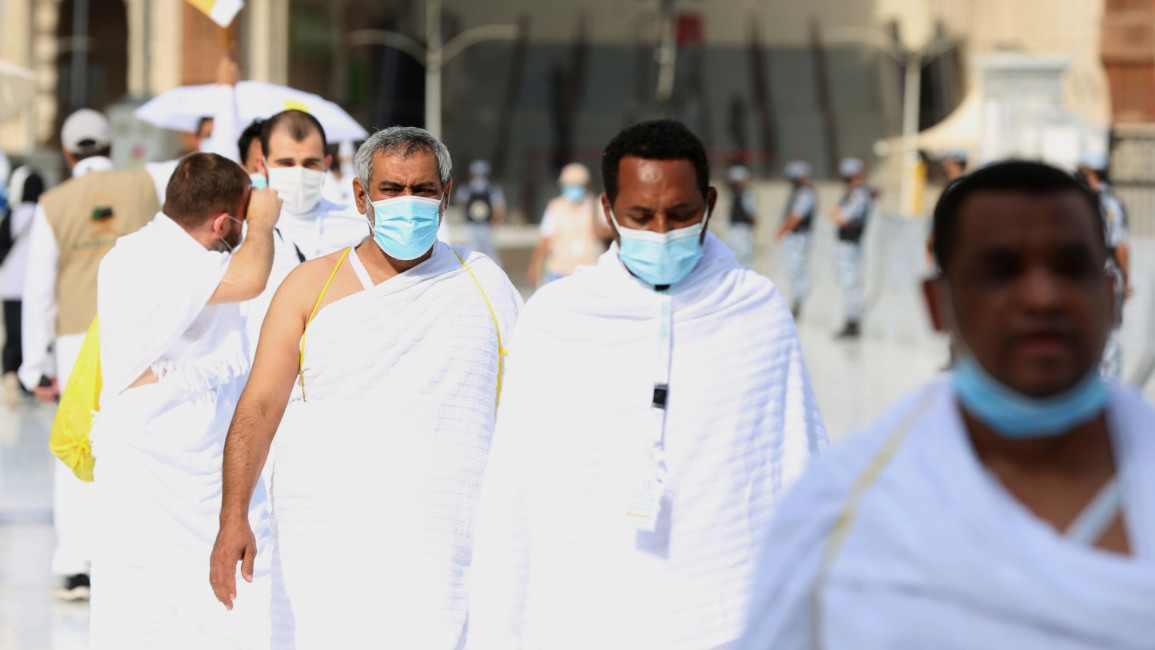Muslim pilgrims pray on peak day of hajj in shadow of coronavirus
Masked pilgrims arrived Thursday at Mount Arafat, a desert hill near Islam’s holiest site, to pray and repent on the most important day of the hajj, the annual pilgrimage in Mecca in Saudi Arabia.
The global coronavirus pandemic has cast a shadow over every aspect of this year’s pilgrimage, which last year drew 2.5 million Muslims from across the world to Mount Arafat, where the Prophet Muhammad delivered his final sermon nearly 1,400 years ago.
This year, a very limited number of pilgrims were allowed to take part in the hajj amid numerous restrictions to limit the potential spread of the coronavirus. The Saudi government has not released a final figure on the number of hajj pilgrims this year, but has said anywhere from 1,000 to 10,000 would be taking part. All of this year's pilgrims are either residents or citizens of Saudi Arabia.
In past years, a sea of pilgrims dressed in white terrycloth garments would start to gather at Mount Arafat, or hill of mercy as it's known, before dawn and remain there until nightfall, spending the day in deep contemplation and worship. It is common to see pilgrims with tears streaming down their faces, their hands raised in worship on the slopes of the rocky hill where the Prophet Muhammad called for equality and unity among Muslims.
|
||
The sliver of pilgrims performing the hajj this year arrived at Mount Arafat before noon by bus on Thursday. They are traveling in small groups of 20, following strict guidelines around social distancing, have undergone tests for the Covid-19 disease and were in quarantine before the hajj.
Unlike in past years, the pilgrims are not allowed to stand shoulder to shoulder with other Muslims from around the world, all considered equal in Islam before God, seeking mercy, blessings, good health, bounty and healing. Pilgrims are wearing wristbands this year provided by the Saudi Health Ministry that are connected to their phones and monitor their movements to ensure physical distancing.
After spending the day in prayer on Mount Arafat, pilgrims will head toward an area called Muzdalifa, about 5.5 miles (9 kilometers) west of Mount Arafat.
In Muzdalifa, pilgrims rest and traditionally pick up pebbles that will be used for a symbolic stoning of the devil and casting away of evil. This year, however, the pebbles have been prepackaged and sterilised.
The final ritual takes place over three to four days in Mina, an area about 12 miles (20 kilometers) east of Mecca. The final days of hajj coincide with Eid al-Adha, or the festival of sacrifice, celebrated by Muslims worldwide.
Follow us on Facebook, Twitter and Instagram to stay connected


![The White House Correspondents' dinner is seeing renewed scrutiny amid Israel's war in Gaza. [Brooke Anderson/The New Arab]](/sites/default/files/styles/image_330x185/public/2024-04/IMG_5497.jpg?h=71976bb4&itok=iSygAqbR)